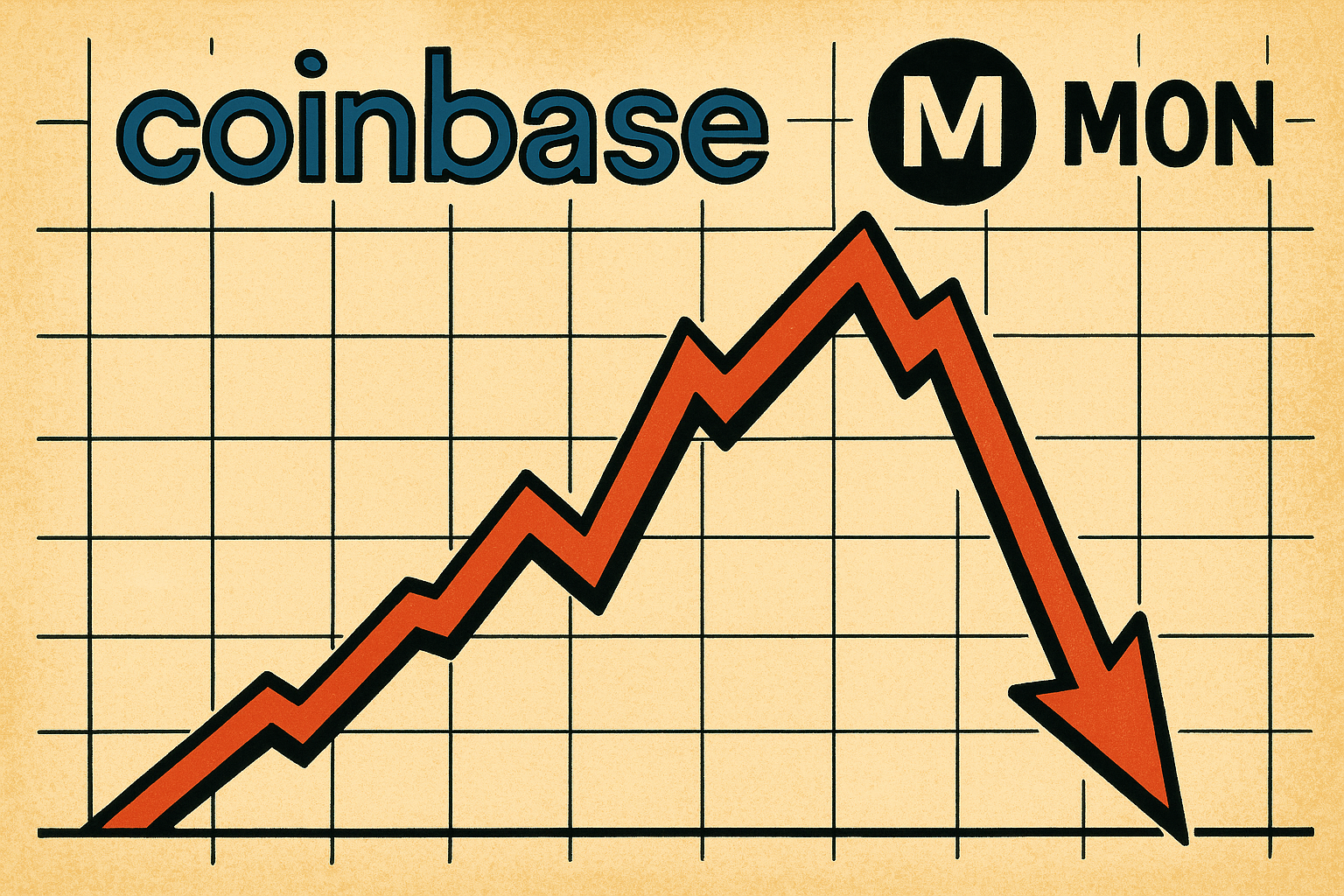News
Samsung and Coinbase Partner to Put Crypto in Your Pocket

- Share
- Tweet /data/web/virtuals/383272/virtual/www/domains/theunhashed.com/wp-content/plugins/mvp-social-buttons/mvp-social-buttons.php on line 63
https://theunhashed.com/wp-content/uploads/2025/10/coinbase-1000x600.png&description=Samsung and Coinbase Partner to Put Crypto in Your Pocket', 'pinterestShare', 'width=750,height=350'); return false;" title="Pin This Post">
Imagine buying crypto as easily as tapping your phone at a checkout terminal. With its latest partnership, Samsung is aiming to make that a reality for millions of Galaxy users across the United States. The tech giant has teamed up with Coinbase to integrate digital asset management directly into the Samsung Wallet, transforming Galaxy smartphones into gateways for crypto adoption.
This move signals more than a feature update. It’s a statement of intent: Samsung wants to position its devices at the heart of the next wave of financial innovation. With Coinbase providing the backend infrastructure and Samsung delivering the hardware and user experience, the collaboration brings mainstream usability to a technology that, until now, remained largely siloed in apps and exchanges.
Coinbase Inside: What the Integration Offers
The partnership enables U.S.-based Galaxy smartphone users to buy, sell, and stake cryptocurrencies directly from within the Samsung Wallet. This means there’s no need to download separate apps or juggle multiple accounts. Users can access Coinbase’s services natively, with the added benefit of Samsung Pay as a seamless payment method for crypto purchases.
To sweeten the deal, Samsung is offering new users a free three-month trial of Coinbase One, the exchange’s premium subscription that offers reduced trading fees, higher staking rewards, and priority customer support. First-time traders can also receive a $25 credit, making the barrier to entry even lower.
The goal here is clear: bring digital assets to everyday users in a way that feels intuitive and familiar. With Samsung Wallet already hosting payment cards, IDs, digital keys, and boarding passes, the addition of crypto tools is designed to make the app a true all-in-one financial hub.
Why This Is a Turning Point
Samsung’s move arrives at a time when crypto adoption is gradually transitioning from niche to normalized. While previous attempts to merge mobile hardware with blockchain functionality have been modest—think HTC’s Exodus line or the Solana Saga phone—Samsung’s approach has two distinct advantages: massive scale and a polished user experience.
With over 75 million Galaxy users in the U.S. alone, Samsung can rapidly expose crypto functionality to a huge and diverse user base. Unlike past efforts that required users to understand private keys or download clunky third-party apps, this partnership removes technical friction. You don’t need to be a crypto native to use it—just a Galaxy user with curiosity and a few taps to spare.
For Coinbase, the integration is an equally strategic win. As competition among exchanges intensifies, distribution is everything. Being embedded in one of the most widely used smartphone ecosystems gives Coinbase a powerful channel to onboard new users organically, without relying on expensive advertising or affiliate programs.
But perhaps the most important implication is what this signals about the future of financial access. If phones can serve as banking tools, digital ID holders, and crypto wallets all at once, then the idea of a “super app” isn’t just a vision—it’s becoming a feature of our daily digital lives.
Potential Pitfalls and Challenges
Despite the clear benefits, the partnership is not without its complications. The rollout is limited to the United States for now, which means international users will have to wait until Samsung and Coinbase navigate the patchwork of global crypto regulations. Markets like Europe, Asia, and Latin America may face additional compliance hurdles before similar features are available.
Security is another concern. While Samsung has long touted the Knox security platform that powers its wallet encryption, the stakes are higher when actual crypto assets are involved. Trust in the system will depend on airtight key management, seamless backups, and fast, user-friendly recovery methods.
There’s also the challenge of balancing accessibility with complexity. Crypto is still a volatile space, and new users lured in by convenience might not fully grasp the risks involved. If not accompanied by clear guidance, the ease of access could lead to financial missteps or disillusionment during inevitable market downturns.
Moreover, the collaboration may raise eyebrows among regulators. Embedding financial services directly into consumer hardware blurs the line between tech and finance. That’s a space already under scrutiny, especially in the U.S., where regulatory clarity around digital assets remains elusive.
What Comes Next
If the integration proves successful, global expansion seems inevitable. Samsung could take the model to its massive user base in Europe and Asia, tailoring features to local laws and consumer behaviors. The Samsung Wallet itself may evolve to support more than just token purchases and staking—potential additions could include lending, borrowing, or even NFT storage and interaction.
Competitors will be watching closely. Apple, Google, and other major hardware players may feel pressured to follow suit, pushing crypto further into the mobile mainstream. If that happens, we could see a new battleground emerge—not just over apps and ecosystems, but over how deeply smartphones become enmeshed with the financial systems of the future.
For now, though, Samsung and Coinbase are taking a decisive step forward. By integrating crypto directly into a platform used by tens of millions of people, they are not just betting on blockchain—they are weaving it into the everyday fabric of digital life.
Ethereum
Small Kingdom, Big Move — Bhutan Stakes $970 K of ETH via Figment to Back National Blockchain Ambitions

Bhutan Turns Heads With Institutional‑Grade ETH Stake
The government of Bhutan quietly moved 320 ETH — worth roughly $970,000 — to Figment, the well-known staking provider, signaling a major shift in how the Himalayan kingdom engages with crypto. Rather than a speculative or retail‑style buy, this is an institutional‑level stake: the amount deployed corresponds to 10 full Ethereum validators (since each validator requires 32 ETH).
More Than Just Yield: Bhutan Anchors Crypto in Governance
Bhutan’s ETH stake comes on the heels of a far broader crypto‑adoption push. In October 2025 the country launched a sovereign national digital identity system — built not on a private chain, but on the public Ethereum blockchain. The decision to anchor citizen identities on a decentralized, globally supported network like Ethereum underscores a long‑term vision: decentralized identity, on‑chain transparency, and national infrastructure built with blockchain.
For Bhutan, this ETH stake isn’t about short‑term price swings or hype — it reflects a strategic bet on Proof‑of‑Stake infrastructure. By running validators via Figment, the government contributes to network security, potentially earns rewards, and aligns its own holdings and governance systems with the protocols underlying its digital‑ID rollout.
What This Signals for Ethereum — and for Crypto Governance
Though 320 ETH is a drop in the bucket compared to total staked ETH globally, the move carries symbolic weight. A sovereign state publicly committing funds to ETH staking via a recognized institutional provider adds to the broader narrative: that Proof‑of‑Stake networks are maturing, and that blockchain can underpin more than speculative assets — it can support identity, governance, and long-term infrastructure.
Moreover, it highlights that institutional staking services like Figment are increasingly trusted not only by hedge funds or corporations, but by governments. According to Figment’s own data, their Q3 2025 validator participation rate stood at 99.9%, and they reported zero slashing events — underlining the reliability such clients are counting on.
What to Watch Next
Will Bhutan stake more ETH? On‑chain data shows the wallet still holds a portion of ETH that remains unstaked — suggesting potential for future validator additions.
Will other nations follow suit? If Bhutan’s mixed use of crypto — combining reserve assets, public‑service infrastructure, and staking — proves viable, it could serve as a blueprint for other smaller states looking to modernize governance with blockchain.
Will this affect ETH’s valuation? Hard to say immediately. The 320 ETH is unlikely to move market prices by itself. But if this step becomes part of a larger trend toward institutional and sovereign staking, the cumulative effect on demand and network security could indirectly support ETH’s long-term value proposition.
Altcoins
Meme Coins Are Losing Their Mojo — From 20 % of Crypto Buzz to Just 2.5 % This Year

Meme‑Coin Hype Takes a Hard Hit
A recent report shows that collective interest in meme coins has plunged from about 20 % of all crypto chatter in late 2024 to roughly 2.5 % by October 2025 — a collapse of nearly 90 %. This shift reflects not only a drop in social buzz but also a broader retreat of speculative enthusiasm across the market. What once felt like the wild west of crypto — rapid launches, viral marketing and huge price swings — is cooling fast.
Market Metrics Confirm the Slide
The decline isn’t just anecdotal. Over the past year, more than 13 million meme tokens flooded the market, many with little to no utility — and most quickly vanished or failed. In a sector built on hype, many of these coins turned out to be short‑lived bets. Overall, the fully diluted market capitalization of memes has dropped by nearly 50 % year‑to‑date, according to blockchain analytics firms.
Trading volume has also cratered. In the first quarter of 2025, memecoin trading volume reportedly fell by 63 %. In many markets, memecoins’ share of overall trading volume dropped below 4 %, marking a dramatic retreat from their previous prominence.
What’s Driving the Decline
The collapse appears driven by a mix of oversaturation, weak fundamentals, and shifting investor preference. The meme‑coin ecosystem became overcrowded — tens of millions of projects launched, many with no clear roadmap or utility beyond chasing quick returns. That oversupply, combined with a broader crypto market slump, has wreaked havoc on liquidity and investor confidence.
Some analysts also cite growing regulatory scrutiny and a rising demand for real utility and transparency rather than hype‑driven “get‑rich‑quick” schemes. Meanwhile, capital and attention are rotating toward more tangible crypto sectors — such as AI‑powered tokens, infrastructure projects, DeFi, privacy coins and even traditional‑finance–style crypto instruments.
Could This Be a “Generational Bottom”?
Some within the community argue that the crash may bottom out soon — and that a new cycle could follow. Once the “dead weight” of unsustainable projects is cleared out, more serious, utility‑driven tokens could regain attention. Others believe the meme‑coin era may be effectively over — that the speculative mania has dissipated, and unless a meme coin brings real innovation or value, investors will avoid it.
Broader Implications for Crypto Markets
The downfall of meme coins underscores a broader maturation of the crypto industry in 2025. Markets appear to be shedding excess speculation and gravitating toward assets with fundamentals. This could lead to healthier ecosystem growth, better token design, and more sustainable long‑term investment — but also less room for high‑risk, high‑reward “moonshot” plays that defined crypto’s early years.
Altcoins
NYSE Arca Files to Launch Altcoin-Focused ETF

Fresh Rule‑Change Proposal Seeks Green Light From SEC
A fresh proposal filed by NYSE Arca could soon bring a new kind of cryptocurrency investment product to the U.S. market. In partnership with asset management giant T. Rowe Price, the exchange is seeking regulatory approval to list an actively managed crypto ETF that goes beyond Bitcoin and Ethereum. If approved, the fund would give investors exposure to a mix of top altcoins—like Solana, XRP, Cardano, and more—through a traditional stock exchange, eliminating the need for wallets, private keys, or crypto trading accounts.
What the Fund Would Do: A Broad, Actively‑Managed Crypto Basket
The Fund isn’t a passive single‑asset product but aims for active management. Its objective is to outperform the FTSE Crypto US Listed Index over the long term.
At launch the Fund intends to hold a diversified basket of “Eligible Assets,” which currently include major tokens such as Bitcoin (BTC), Ether (ETH), Solana (SOL), XRP, Cardano (ADA), Avalanche (AVAX), Litecoin (LTC), Polkadot (DOT), Dogecoin (DOGE), Hedera (HBAR), Bitcoin Cash (BCH), Chainlink (LINK), Stellar (XLM), and Shiba Inu (SHIB).
The Fund may hold as few as five, or as many as fifteen, crypto assets at any given time — and is not strictly tied to the index’s weighting. It may over‑ or underweight certain assets, or include crypto outside the index, guided by active selection criteria such as valuations, momentum and fundamental factors.
The idea is to give investors exposure to a diversified crypto portfolio without having to manage wallets, custody, and rebalancing — while potentially delivering better returns than a static, index‑tracking fund.
Risk Controls, Custody and Governance
To ensure safety and regulatory compliance, the Fund will store its crypto holdings with a dedicated crypto custodian. Private keys will be secured under strict controls, preventing unauthorized access or misuse.
When the Fund stakes any crypto (if staking is employed), it will maintain policies to ensure sufficient liquidity to meet redemptions, especially if a large portion of assets becomes illiquid or locked.
Valuation of the crypto holdings — used to compute Net Asset Value (NAV) per share — will rely on reference rates from third‑party price providers, aggregated across multiple platforms. The NAV will be computed daily, aligned with close of trading on the Exchange or 4:00 p.m. E.T.
Why It Matters for Crypto and Traditional Finance
This filing reflects a broader shift in traditional financial markets embracing diversified, regulated crypto investment vehicles. Unlike earlier spot‑crypto ETFs designed for single assets (e.g., Bitcoin), this Fund proposes a multi‑asset, actively managed basket — potentially appealing to institutional investors and diversified‑portfolio allocators seeking crypto exposure with traditional ETF convenience.
If approved, the Fund would offer a streamlined, compliance‑friendly bridge between traditional capital markets and crypto assets, lowering operational friction for investors who prefer not to deal with wallets, exchanges, or self‑custody.
The approach may also set a precedent: showing that active crypto ETFs can meet listing standards under rules originally written for commodity‑based trusts. This could open the door for more innovation — perhaps funds targeting niche themes (smart‑contract tokens, layer‑2s, tokenized real‑assets) while still abiding by exchange and regulatory requirements.
What’s Next
The SEC review period typically spans up to 45 days from publication (or longer if extended), during which comments from market participants and the public may shape the final decision.
If approved, it may take some additional time before shares begin trading — during which documents like the fund’s prospectus, ETF symbol, and listing date will be finalized and disclosed by the sponsor.
-

 Cardano2 months ago
Cardano2 months agoCardano Breaks Ground in India: Trivolve Tech Launches Blockchain Forensic System on Mainnet
-

 Cardano2 months ago
Cardano2 months agoCardano Reboots: What the Foundation’s New Roadmap Means for the Blockchain Race
-

 Cardano2 days ago
Cardano2 days agoSolana co‑founder publicly backs Cardano — signaling rare cross‑chain respect after 2025 chain‑split recovery
-

 Bitcoin2 months ago
Bitcoin2 months agoQuantum Timebomb: Is Bitcoin’s Foundation About to Crack?
-

 Cardano2 months ago
Cardano2 months agoAfter the Smoke Clears: Cardano, Vouchers, and the Vindication of Charles Hoskinson
-

 Cardano2 months ago
Cardano2 months agoMidnight and Google Cloud Join Forces to Power Privacy‑First Blockchain Infrastructure
-

 Ripple2 months ago
Ripple2 months agoRipple CTO David “JoelKatz” Schwartz to Step Down by Year’s End, but Will Remain on Board
-

 News2 months ago
News2 months agoRipple’s DeFi Awakening: How mXRP Is Redefining the Role of XRP










